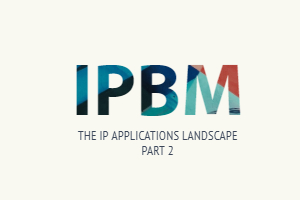
Accidental IPBM: The IP Applications Landscape
Today, we find the IPM market in the midst of a fundamental paradigm shift, one in which the focus of intellectual property management as an operational discipline matures from its long-understood structural grounding in prosecution towards a more holistic approach to information management that is tightly integrated with the underlying business lifecycle. As companies begin to mature their operational capabilities with the integration of business stakeholders and drivers into their performance models, there is demand for sophisticated technologies that understand and drive the IPBM (Intellectual Property Business Management) model, and provide both depth and breadth of features and capabilities.
On an equally important note, companies expect their software providers to offer implementation and support services that demonstrate subject matter experience, progressive operational proficiency and technical savvy. IPBM is driven by the technologies that support legal operations and performance. Our benchmarking data notably demonstrates that an IPM system alone does not cover the technological needs of an IP organization (see Fig. 3 below).
|
Fig. 3 Technologies Used to Manage IP Assets
|
While 69 percent of IP practices leverage an IPM system in their technology enterprise, and another 62 percent cite traditional docketing software, we are struck by the breadth and diversity of other tools and systems the market leans on to marshal data and drive decisions. E-Billing software, a core legal management tool and central to outside counsel participation, is both as prevalent as Docketing software and used in conjunction with Docketing to enhance the visibility and dimension of IP matters. The market is clearly expressing the need for a diversity of tools to capture, nurture, manage, protect and defend intellectual assets. Yet organizations overwhelmingly address needs with a “whack-a-mole” strategy, acquiring technology to address a specific, narrow need when a challenged arises. The role of IPBM, thus, is to present a unifying framework that allows organizations to understand their holistic information management needs and address them in a cross-functional discipline to guide, drive and support business units and partners.
Despite the diversity of technology demonstrated here and the many facets of end-to-end IP lifecycle management, one trend we have observed among leading IPM vendors is the diversification of core capabilities in the IPM system itself. When this takes place, an example of the “center of excellence” approach to information strategy, clients have access to the widest range of functionality as is possible.
Spend Management: Borrowing Operational Maturity
In our research, we have observed leading IPM vendors focus development resources to create new competencies for IP spend management. These new IPBM capabilities borrow heavily from the sibling discipline of Enterprise Legal Management (ELM), which, largely is dedicated to the harvesting, analysis, and management of legal invoice data for business insight. This reinforces the notion that progressive practice management, whether in corporate law departments or law firms, must adopt a multidisciplinary cross-functional approach.
As a result, we have observed a notable expansion in the use of performance metrics, reporting and Key Performance Indicators (KPIs) to track and contextualize IP spend. We have also seen the development and adoption of modules to manage IP-related spend with the integration IP budgets, matter templates, forecasting, accruals and spending rules. Lecorpio, to cite one example, has been particularly aggressive in developing expansive spend-management capabilities. Recently, it introduced a new budget and forecasting tool, which allows users to build custom task-driven budget templates; these are used to scope and forecast IP spend, track performance against expectations, and even to perform scenario-based modeling with visual representations and contextual predictors for how various changes and assumptions could affect bottom-line performance. Lecorpio also offers a fully realized module for contract management, a growing legal-technology discipline.
Such competency and insight into both prosecution and maintenance-related costs can be of equal benefit to law firms and corporate law departments, both of which seek persistently to add business value to the services they provide. These tools and integrated features help illustrate what a true IPBM solution can accomplish. They also further highlight the growth of IPM from a mere set of tactical tools to a more organic, institutional mindset: that spend management, as a prime example, is necessary for bona fide bottom-line discipline.



